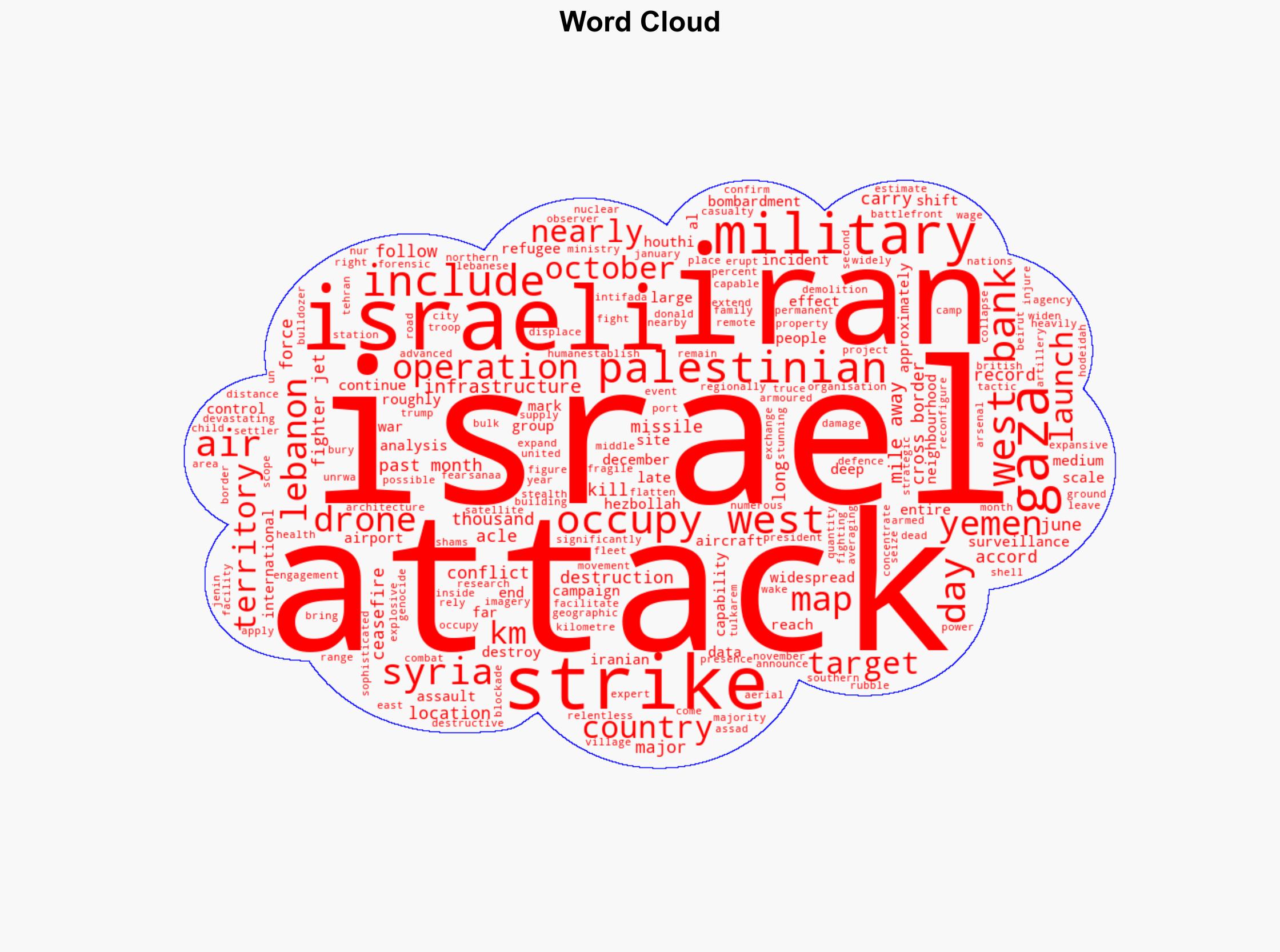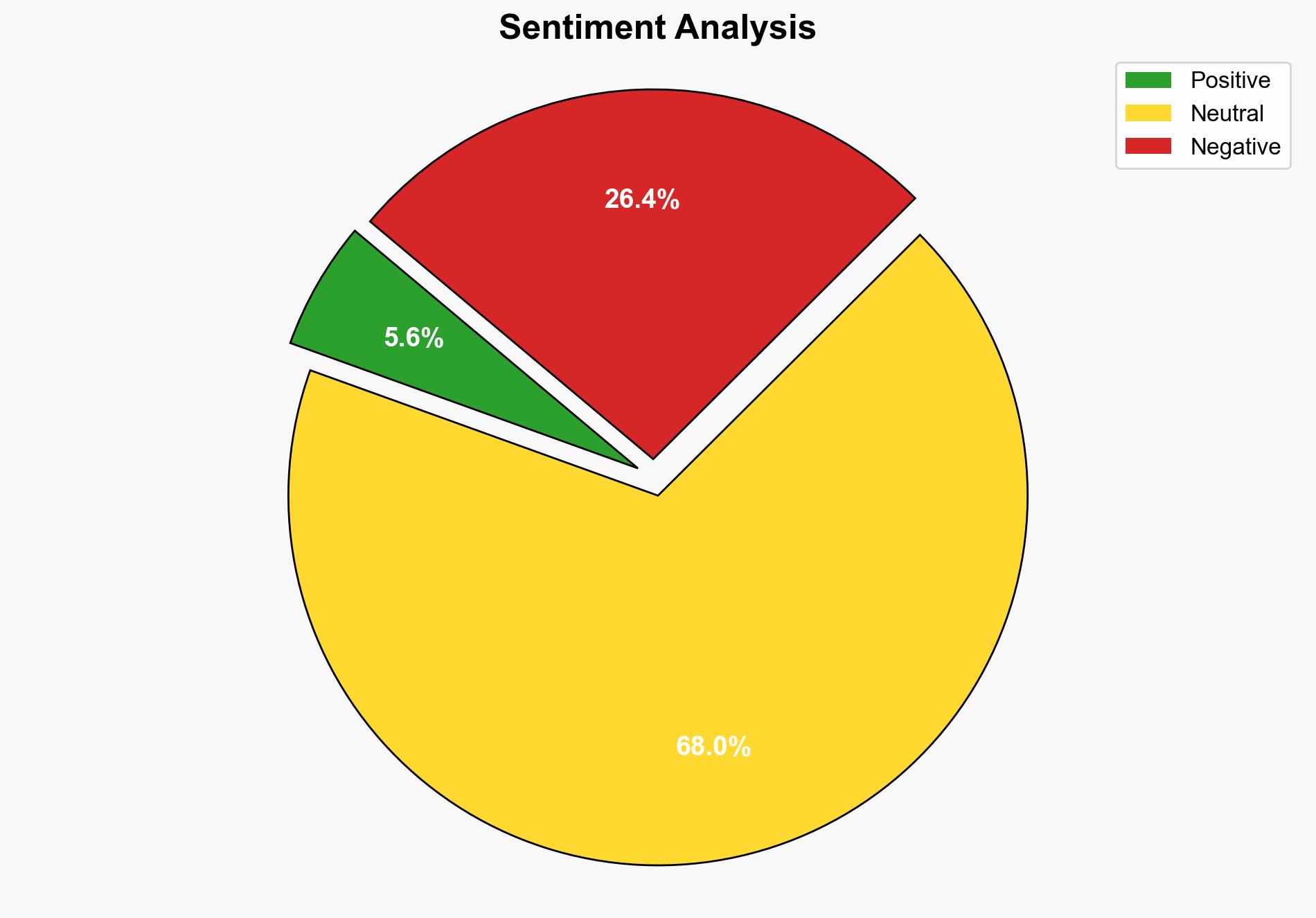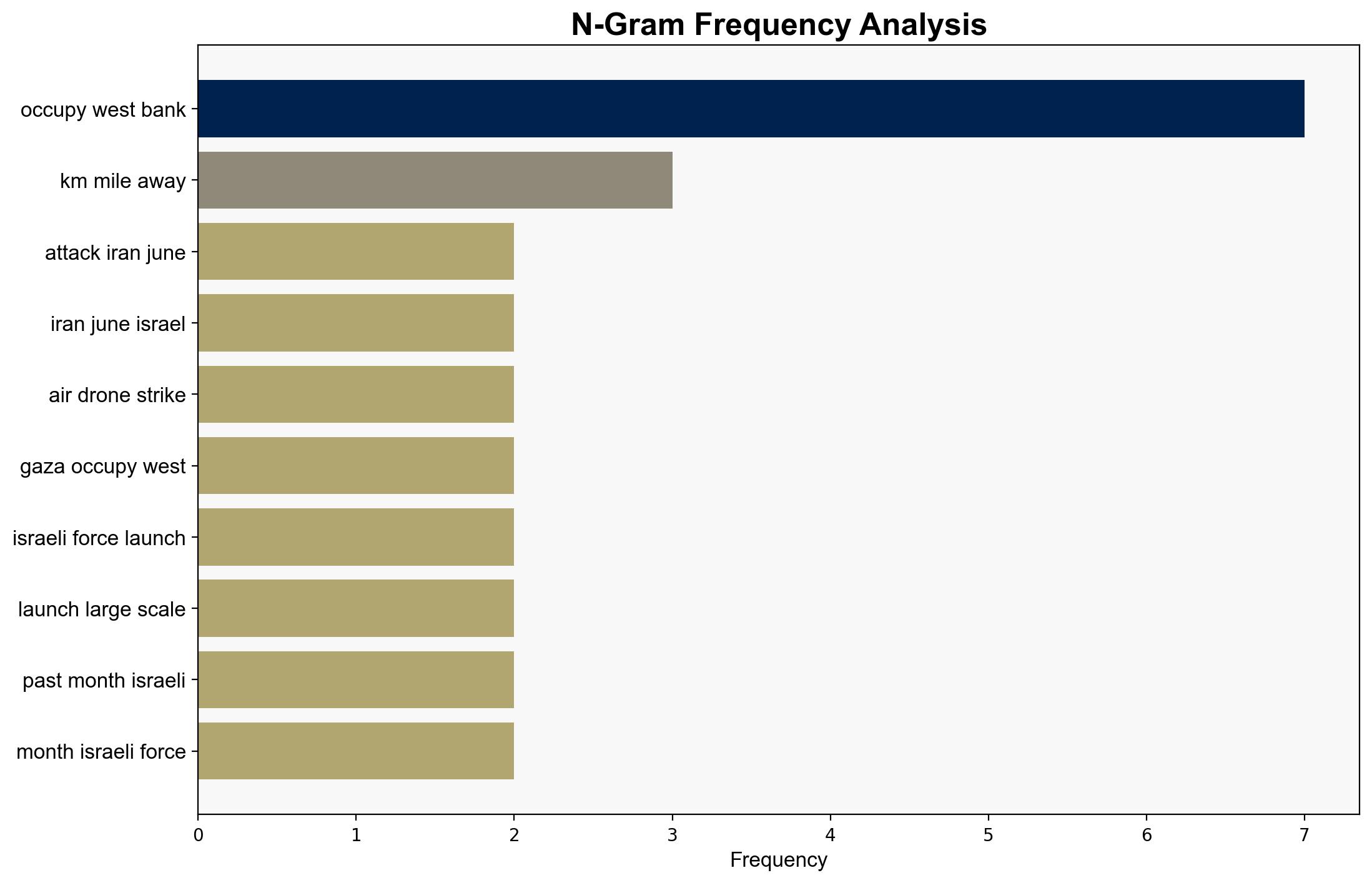Mapping Israels expanding battlefronts across the Middle East – Al Jazeera English
Published on: 2025-06-25
Intelligence Report: Mapping Israel’s Expanding Battlefronts Across the Middle East – Al Jazeera English
1. BLUF (Bottom Line Up Front)
Israel has significantly expanded its military operations across the Middle East, targeting multiple countries including Iran, Lebanon, Syria, and Yemen. This expansion marks a shift towards a more regionally expansive military engagement. The strategic use of advanced aircraft and drones has enabled long-distance strikes, increasing the geographic scope of conflict. The ongoing military actions have resulted in widespread destruction and displacement, particularly in the Palestinian territories and Lebanon. Immediate attention is required to address the humanitarian impact and potential escalation of regional tensions.
2. Detailed Analysis
The following structured analytic techniques have been applied to ensure methodological consistency:
ACH 2.0
Reconstruct likely threat actor intentions using machine-assisted hypothesis testing and structured refutation. The analysis suggests Israel’s actions are driven by strategic objectives to counter perceived threats from Iran and its allies.
Indicators Development
Track digital radicalization, travel patterns, or online propaganda to anticipate operational planning. Increased online propaganda and digital mobilization have been observed, indicating potential for further escalation.
Narrative Pattern Analysis
Map and deconstruct ideological narratives for threat assessment. The narrative of self-defense against existential threats is prominent in justifying military actions.
3. Implications and Strategic Risks
The expansion of Israel’s military operations poses several strategic risks, including heightened regional instability and potential retaliation from affected countries. The destruction and displacement in Palestinian territories and Lebanon could exacerbate humanitarian crises and fuel further conflict. Additionally, the reliance on advanced military technology increases the risk of cyber vulnerabilities and potential countermeasures by adversaries.
4. Recommendations and Outlook
- Engage in diplomatic efforts to de-escalate tensions and promote dialogue between Israel and affected countries.
- Enhance humanitarian aid and support for displaced populations to mitigate the impact of military operations.
- Monitor cyber activities and strengthen cybersecurity measures to protect against potential retaliatory attacks.
- Scenario-based projections:
- Best Case: Successful diplomatic interventions lead to a reduction in military actions and stabilization of the region.
- Worst Case: Continued escalation results in a broader regional conflict involving multiple state and non-state actors.
- Most Likely: Ongoing military operations with periodic escalations and temporary ceasefires.
5. Key Individuals and Entities
Key individuals and entities involved in the ongoing conflict include military and political leaders from Israel, Iran, Lebanon, Syria, and Yemen. Specific names are not mentioned to maintain focus on strategic analysis.
6. Thematic Tags
national security threats, cybersecurity, counter-terrorism, regional focus





